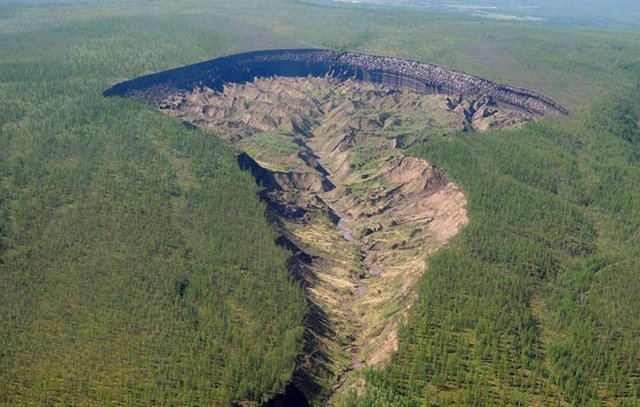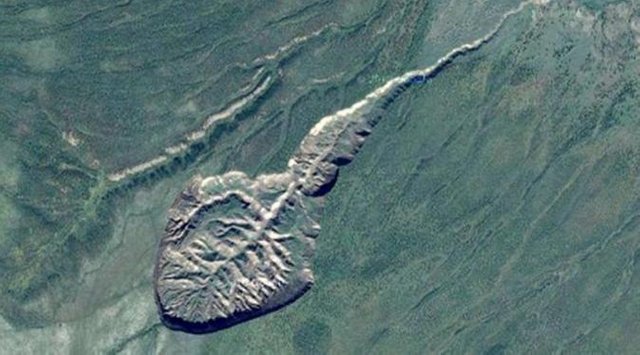The Gate of Hell 'In Siberia Continues to Grow.

Back in the 1960s, rapid forest removal in eastern Siberia resulted in the loss of shade during the summer months. Sunlight warms the soil, a condition coupled with the loss of the "cold" sweat of the tree, which also once helped the ground to stay cool. As the soil heats up, the layers beneath it, like the ice sheets begin to melt, the soil begins to collapse slowly. More land collapsed, more ice exposed to warmer temperatures, thus was born Batikika crater.
The crater is located 410 miles northeast of the Yakutsk region capital. Researchers say that the crater along the 6 meters and 282 feet is growing rapidly. The crater wall has swelled about 33 feet per year on average over the past decade of observation. However, as recently Earth has warmer years than many decades before, the crater began to show dramatic growth of up to 98 feet per year. The crater side is likely to reach the nearest valley as summer approaches, which can further accelerate its collapse. "On average over the years, we've seen that there is not much acceleration or slowdown of this level, but it's growing," Frank Günther of the Alfred Wegener Institute told the BBC, "And continuous growth means the crater becomes deeper and deeper. In every year. ".

Aside from the real discomfort, the surface of the planet will collapse on itself. The planet will also have its consequences as well. The consequence is the exposure of carbon stores that have been stored in permafrost for thousands of years. "Estimates of carbon stored in permafrost are the same amount as what is in the atmosphere," Gunther said. "This is what we call positive feedback," he added. "Warming up warms up, and this could happen elsewhere."